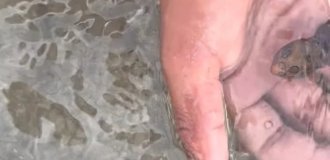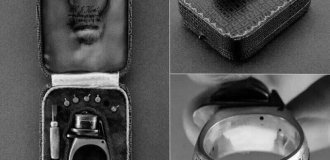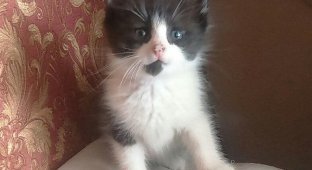Bloody tears of a descendant of dragons (12 photos + 1 video)
When you are small and appetizing, you have to turn your fur inside out to protect yourself from the encroachments of the big and hungry. Or with their spines facing outward, as the sun-horned lizard does. 
The iguana species, named for its love of sunbathing, was first described in 1845 by naturalist John Edward Gray. These mini-dragons, native to Mexico and the southwestern United States, can lie in the sun for up to 4 hours. The majority of the population hides in shelters from the heat during hot hours. And for the lizard it’s just paradise - both warm and safe. 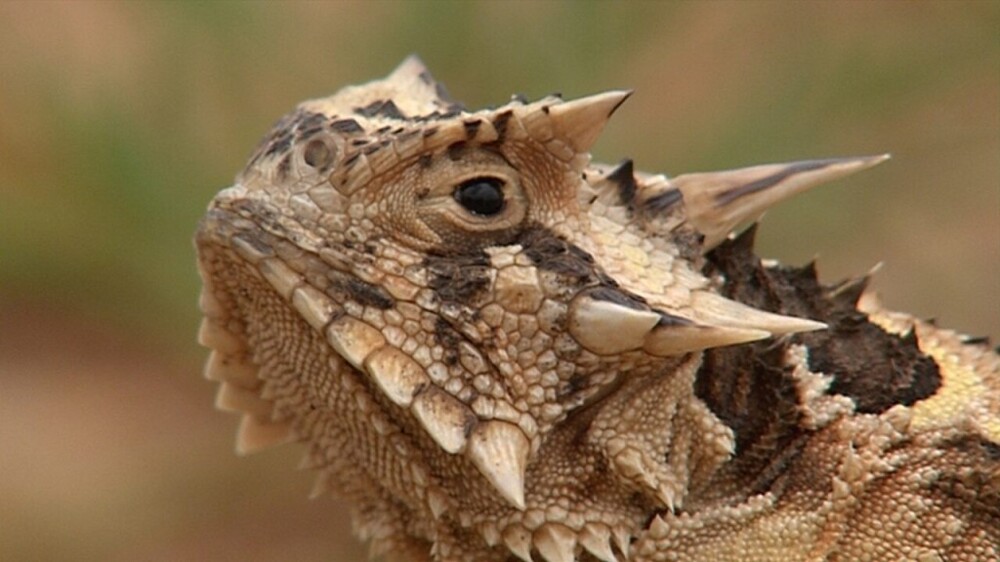
After this, the metabolism of the small predator reaches its peak. And he goes hunting. The lion's share of the horned lizard's diet consists of harvester ants. The surreal creature grabs its prey with its tongue, like a toad. Therefore, it is also called the toad lizard. 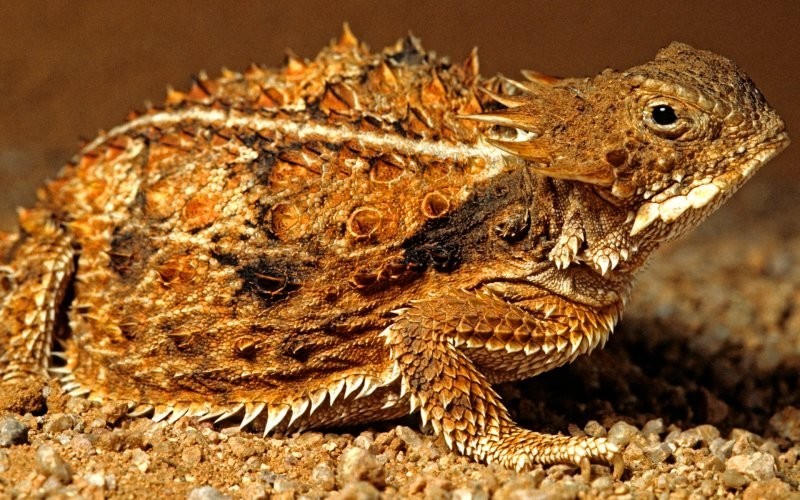
The process of reproduction and raising offspring of spiny creatures is standard: mating from late spring to early summer, laying from 10 to 30 eggs, from which babies crawl out after one and a half to two months. They are born with the understanding that this world does not owe them anything. Therefore, the bullets scatter around the surrounding area at speed and bury themselves in the sand to rest a little. And the next day they go on their first independent hunt. 
But the most striking feature of solar creatures is their method of defense. It has the beautiful name autohemorrhage. This term hides the ability of thorns to give enemies a bloody shower. Literally. 
The fact is that most of the toad-like lizards have special sphincter muscles in the large veins in the area of the skull. More primitive colleagues in the shop use them for their intended purpose - to regulate blood pressure. 
And the cunning lizards went further - they learned to use them as bloody weapons. The algorithm is quite simple: the animal blocks the outflow of blood from the head, which causes the pressure in the skull to jump sharply. Small capillaries in the eyelid area rupture, and a bloody fountain shoots out of the tear duct. 
An intelligent creature can choose which eye to use for a shot - the right or left, thanks to separate veins for the outflow of blood on both sides. 
Such tricks are not particularly effective on birds of prey, but a cowardly coyote or wild cat can be quite scared off by a bloody show. 
Naturally, it is uneconomical to constantly spray your own blood. Yes, and it hurts, because the wounds need to be healed. Therefore, lizards take such measures only in extreme cases, when there is a direct threat to life. 
In other situations, thorns try to blend in with the terrain, which works well due to their ability to change color. Throw away the tail to buy time to escape while the pursuer studies the ownerless organ. Or use spines to prevent a predator from grabbing a potential meal. 
Well, in extreme cases you have to resort to a bloody stream. For the capillaries will be restored, but there is only one life. 




